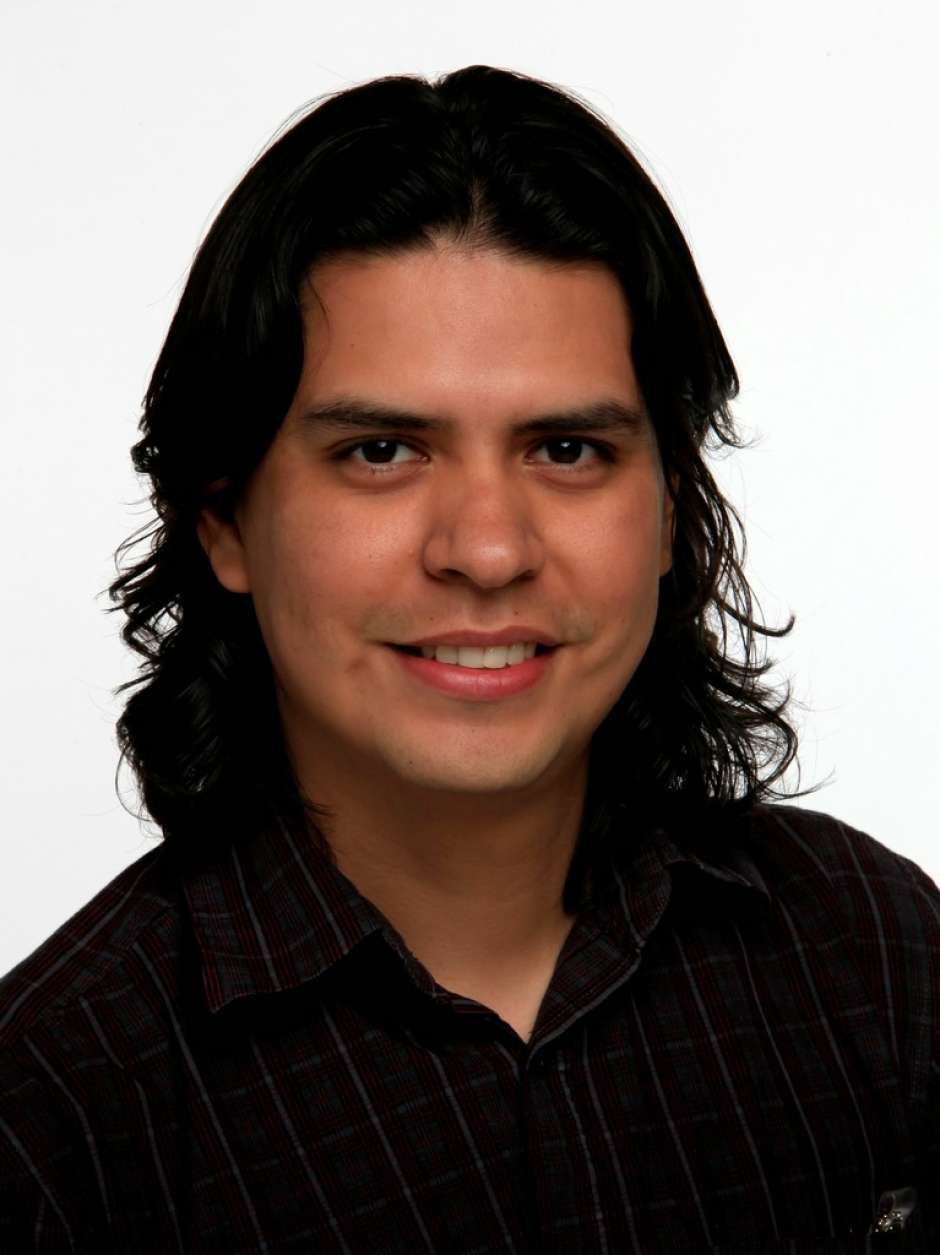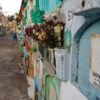This story was reported with support from the Pulitzer Center Reporting Fellowship Program.
Introduction
Warning: Graphic image below
QUETZALTENANGO, Guatemala — Every week, Wendy Griselda DeLeon Morales goes to a cemetery in the hills of southern Guatemala and leaves flowers on the grave of a woman who may or may not be her mother.
“Only God knows if that’s really her,” Morales says.
The body, purportedly that of 41-year-old Thelma Morales, has been buried since October 2016. It was found face up in a field near U.S. Highway 83 in South Texas, three miles north of the Rio Grande. A smuggler had taken Thelma across the border; her fate after that is unclear. There were few clues other than a garbled call from a woman using Thelma’s phone.
“I don’t think that she died,” Wendy Morales says. “They never let us open her casket or returned any of her personal items.”
For Morales and many others, science could provide certainty. A simple swab of the inside of her cheek would collect the cells necessary to run a computerized DNA comparison that looks for genetic links to a sample taken from the body. But the systems in place to recover, identify and return migrants to their home countries are broken, a failing made more poignant as Latin American countries mark the Day of the Dead, a multiday commemoration of the departed.
More than 2,000 unidentified bodies — most of which were in pieces after being devoured by vultures or other wild animals — have been recovered north of the U.S.-Mexico border since 1998, according to an analysis of data from the National Missing and Unidentified Persons System (NamUs), a free, online database funded by the U.S. Department of Justice.
South of the border, nongovernmental organizations and migrants’ rights groups have gathered more than 4,000 DNA samples from family members of the missing. But the dots aren’t being connected, and people like Wendy Morales are left to wonder if any of the bodies found on the U.S. side could be those of their loved ones.
More than 600 migrants have died in the Americas so far in 2019 — the highest total since the International Organization for Migration, part of the United Nations, began tracking deaths using official and media reports in 2014. Half perished on the U.S.-Mexico border. Some — perhaps most — of those 300 bodies will go unidentified.
(Warning: Graphic Image)

“We are currently experiencing a global migrant crisis,” says Kate Spradley, a forensic anthropologist from Texas State University leading an international effort to identify the remains of migrants found on the border. “If the U.S. can’t find a way to compare these DNA datasets, there is no hope for the rest of the world.”
‘Humanitarian crisis’
Spradley is a member of the Forensic Border Coalition, a cross-border consortium formed in response to what both the American Civil Liberties Union and Mexico’s National Commission on Human Rights have deemed a “humanitarian crisis” of migrant deaths on the border. Since the 1990s, the U.S. government’s approach to border security has been to fortify populated points of entry, pushing migrants into more remote and treacherous routes in Texas and Arizona.
U.S. Customs and Border Protection receives thousands of missing-migrant reports every year. But CBP officials say they are strapped for resources and must prioritize rescuing people who are alive. As a result, most migrant bodies or remains in South Texas, the deadliest stretch of the border since 2014, are found by cattle ranchers. These ranchers can deny federal agents access to their land to conduct warrantless searches.
When a body is recovered, it usually goes to a medical examiner, where a federally mandated DNA sample is taken for the purpose of identification. But cash-strapped counties in Texas often contract out this work to funeral homes or independent pathologists known to bury migrants in unmarked graves without proper paperwork, according to a 2016 article co-authored by Spradley in the Academic Forensic Pathology Journal.
If by luck a body is recovered with some form of identification, it’s the responsibility of the migrant’s home country to notify relatives and help collect DNA samples from them for matching with the deceased. More often, however, bodies are returned to families without genetic verification. They sometimes learn of their loved ones’ deaths from news reports.
The Trump administration didn’t help matters when, in December, it opposed the UN’s first Global Compact for Safe, Orderly and Regular Migration. The compact called for the creation of DNA databases that could be shared among countries with high immigration rates to help the identification and repatriation of the dead.
In a statement at the time, the U.S. Mission to the U.N. wrote, “While the United States honors the contributions of the many immigrants who helped build our nation, we cannot support a ‘Compact’ or process that imposes or has the potential to impose international guidelines, standards, expectations, or commitments that might constrain our ability to make decisions in the best interests of our nation and citizens.”
South of the border
Henry Perez of San Marcos, Guatemala, is among the 4,000 or so people who have provided DNA samples to try to ascertain the fate of loved ones. Perez, 35, has been searching nearly a decade for his younger brother, Luis; the two last spoke in July 2010, when Luis, then 21, called Henry from Reynosa, Mexico, across the river from McAllen, Texas. He’d trekked more than 1,000 miles on foot and by bus across some of Mexico’s most dangerous migrant routes, controlled by drug cartels.
On the phone from Reynosa, Luis sounded uncharacteristically worried.
“He said he could spend weeks at a safehouse waiting to be smuggled across the border, but he stopped calling, and we don’t know if that time ever came,” Henry Perez recalled, his hand shaking as he picked up a mug of hot cinnamon tea. “I’m not sure if we ever will.”
Surrounding Perez in a small church cafeteria sat dozens of mothers, wives and children of other missing migrants from across Guatemala, part of an annual pilgrimage to petition the Mexican consulate in Quetzaltenango for updates. Some had spent more than 10 hours on a bus to get there.

The next morning the families were joined by members of the Fundacion Para La Justicia y El Estado Democratico De Derecho — the Foundation for Justice and the Democratic Rule of Law — a human-rights organization that represents relatives of 93 missing migrants from Mexico, Guatemala, Honduras and El Salvador. Together they went to the consulate, where they met with state officials and law enforcement for an update on the search for their loved ones. Perez walked out of the 12-hour meeting feeling spent.
“They said they’ve been working on Luis’s case, but they don’t have any new leads,” he said. “It’s the same thing they’ve told me every year.
“Honestly, I’m not sure he’s still alive. But my family and I need to know what happened so we can start the grieving process.”
North of the border
Each year, a caravan of volunteers drives into the dusty town of Falfurrias, Texas, to exhume unidentified migrants buried without genetic sampling in Sacred Heart Cemetery owned by Brooks County. Led by anthropology professors at Texas State University and other schools, the group has exhumed the remains of more than 200 migrants in the past five years.

The volunteers find corpses buried in trash bags, scattered throughout the cemetery in unmarked graves, or stacked atop one another inside flimsy pine boxes. But a 2014 investigation by the Texas Rangers found no laws were broken by the funeral homes paid to bury the remains. They carefully dig up the graves by hand, checking every bucket of dirt for bone fragments. At a Texas State University laboratory in San Marcos, students collect DNA from the remains, clean them and catalog them as “John Doe” or “Jane Doe” while working to confirm their real names.
In October 2018, Spradley and relatives of missing migrants pleaded for help at a conference held by the Inter-American Commission on Human Rights in Boulder, Colorado. Officials with the FBI and CBP mostly listened. Paula Wolff, chief of the FBI’s forensic science law unit, seemed sympathetic to the families’ appeals, noting, “Both as a mother and as a representative of the FBI, I cannot agree with you more.”
“I don’t think that we have any disagreement regarding the ‘what’ must be done,” said Wolff, who oversees the Combined DNA Index System (CODIS), a database that stores DNA samples gathered by U.S. law enforcement agencies and can be used to run mass comparisons. “The only issues are working through the ‘how’ it is to be accomplished.”

In a statement for this article a year later, the FBI said it had “worked with attendees of that conference to facilitate the shared goal of the identification of non-U S. citizen human remains recovered in the United States.” The bureau said it was moving to create a “CODIS-supported stand-alone humanitarian database populated with genetic data from missing migrant relatives for the purpose of comparing that data to the DNA records from human remains recovered in the United States.”
CODIS already can be used to identify missing persons, but the DNA Identification Act of 1994 states that all genetic samples must be taken in the presence of a law enforcement officer to establish a chain of custody and ensure the sample was taken with the family member’s consent. The FBI is trying to find a way around this roadblock as it develops the new database.
In July, Sen. John Cornyn, R-Texas, introduced the Missing Persons and Unidentified Remains Act, which calls for additional government grants to forensic anthropology departments, including Spradley’s, and mandates more federal resources for the search and rescue of missing migrants, dead or alive.
“Our border communities have experienced the very real consequences of the treacherous journey travelled by many seeking to come to this country,” he said in a news release.
As of late October, the bill remained stuck in the Senate Judiciary Committee, where a version of it died in 2018.
Connecting the dots
Mercedes Doretti, a globally recognized forensic investigator who specializes in identifying missing migrants, says there’s nothing especially complicated about sharing DNA samples across the U.S.-Mexico border.

“We’ve already been doing this comparison and it works,” she says. “We just need to expand it.”
Doretti is co-founder of the Argentine Forensic Group, formed in 1984 to investigate the fate of people who had been “disappeared” by the former Argentine military regime. The nonprofit consists of anthropologists, pathologists, radiologists, ballistic experts and archaeologists.
In the early 2000s, the group began investigating the murders of women in Ciudad Juarez, Mexico, across the river from El Paso. Many of the dead, they discovered, were migrants who had gone missing. Members began gathering DNA samples from families, and in 2010 found a private lab in Arizona, Bode Technology Group,to process and catalog them. The lab often contracts with the FBI and was used to help identify human remains recovered from the wreckage of the World Trade Center after the Sept. 11 attacks.
To date, the lab has identified the bodies of 206 migrants recovered on both sides of the border. But these comparisons have been done on a case-by-case basis. The lab could have identified thousands, in a fraction of the time, if it had had access to CODIS.
Doretti said the team has the consent forms and means to connect all 4,000 of its DNA samples to those in CODIS. But CODIS was created to solve crimes, she says, not to help identify migrants.
If the FBI allowed mass comparisons, Doretti says, “It could set an outstanding example of international forensic cooperation and be a model for other migrant corridors around the world.”



Join the conversation
Show Comments